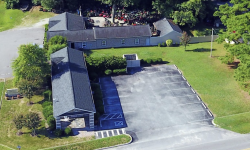
Previously, in “How to Make a Decision” we ran into a potential problem at the last step: Action. You already understand the problem, you have considered the possibilities, and you have evaluated them to come up with the best solution. You know what to do… but you feel stuck. This is a state of inaction.
There are three common barriers to action. In this article, you will better understand the barriers to action, understand what links them, and look at some ways of overcoming those barriers. This is to ultimately help you to take meaningful action towards achieving your goals.
Barrier One: Negative Consequences
The first of the barriers to action is obvious but often overlooked. Decisions have consequences, some of which can be negative. Costs and side effects are examples. Things are expensive, but you choose to buy them anyway because you accept the cost. We often choose to take pharmaceuticals, despite their potentially harmful side effects, because the risk is worth the benefit if you feel better afterwards.
Decisions that are all upside, ones that have no negative consequences, do not usually create barriers to action.
Often, even the best solutions can still have negative consequences. For example, potentially life saving medical procedures, like chemotherapy, fall into this category.
While it is normal to try and avoid negative consequences, there are no perfect solutions. There are always tradeoffs, where it’s time, money, or something else entirely. Even when trying to avoid negative consequences, we still end up paying what economists call opportunity costs. These are the losses of potential gains from our decisions - you know, the ones you’re avoiding because of the negative consequences.
We can do our best to minimize these negative consequences, but in many cases, they are unavoidable and we will have to act despite them. Learning what you can do personally to take action is crucial because negative consequences are not going away anytime soon. It might be helpful to ask yourself, “Given the downsides, is this choice still worth it for me?”
Barrier Two: Uncertainty
In life, there is always some level of baseline uncertainty. Unless you’re the proud owner of a crystal ball, no one can know for certain what will happen next.
After making a big decision, the resulting change can come with a vastly higher degree of uncertainty. This is the second of the barriers to action.
As human beings, we take great comfort from certainty and control. We like to know what is going on. Uncertainty creates risk. Risks are potential negative consequences, which can be even scarier than the ones you are certain of from Barrier One.
Inaction due to uncertainty is the root of the saying “better the devil you know than the devil you don’t know.” The classic example is when someone we know, definitely not us, stays in a bad job or a toxic relationship too long. At least there is certainty in the known, even if it is potentially harmful.
We do our best to gather information and account for risks, but there is always the potential for unpleasant surprises. When considering uncertainty, it is important to take into account our potential negativity bias. For the benefit of our long term survival, but at the expense of our mental health, we tend to broadly pay more attention to the negatives than positives. This can distort our decision making abilities.
Work on being as objective as you can while doing cost benefit analysis. Remember to consider the upside and not just all the ways things could go wrong. When it comes to uncertainty, ask yourself, “Despite the unknowns, is the potential reward still worth it?”
Barrier Three: Responsibility
Whether or not the negative consequences are certain, when you make a decision and take action, you are responsible for that action. Responsibility is the last of the major barriers to action.
It’s an existential truth that you have to live with the consequences of the choices you make. This is all well and good when things go in your favor, but if something goes wrong, it’s your fault! That does not feel good.
When we make mistakes, along with negative outcomes in our lives, there is the potential for reputational damage. We do not want to fail, but we also do not want to be seen as a failure.
As social beings, we do not want to be blamed when something goes wrong. This leads to the tendency to offload decisions onto someone else or let the environment decide for us.
This strategy makes us feel less responsible and gives us a plausible scapegoat to blame if something goes wrong. The problem is that abdicating responsibility also takes away our agency.
As any fan of Spiderman will tell you, great power and great responsibility are a package deal. You cannot have one without the other.
If you’re concerned about taking responsibility, think about your own values and what you stand for. Try asking yourself, “Am I willing to give up my power to choose just to avoid being blamed if it goes wrong?”
The One Barrier to Rule Them All
Wait a minute, I thought there were only three barriers to action in this article! Surprise, there is actually just one.
The root cause of all the barriers to action is fear. Fear is the mind-killer, sometimes paired with loathing in Las Vegas, and also a primal human emotion that drives a lot of our decision making.
When Franklin D. Roosevelt said “the only thing to fear is fear itself,” he was making a profound statement about inaction.
Fear can activate the famous “Fight, Flight, or Freeze” responses from our sympathetic nervous system. In other words, when you are afraid, you can either take action, run away, or wait.
When applied to decisions in your life, flight can be thought of as avoidance. Whether it is avoidance of discomfort, the unknown, or of culpability; all the barriers to action involve some level of avoidance.
One way this shows up is through procrastination. If you have ever put something off until tomorrow, or until the absolute last minute, you’re probably familiar with the feeling.
Freezing is when avoidance becomes a lifestyle. You become stuck in a state of inaction or paralysis. You haven’t just put off action until tomorrow, you’re putting it off indefinitely.
All that is left is the “fight” response. Fight is an unfortunate word here because of the violent connotation. While other animals (and unfortunately some humans) might take fighting more literally, it does not have to involve violence. It is more helpful to think of it as taking meaningful action, even though you’re afraid. This could also be called courage.
Ultimately, courage is what is required to overcome the barriers to action.
To develop courage, thinking of yourself as the protagonist or hero of your own story can help.
The Hero’s Journey
One of my favorite characters is Bilbo Baggins from “The Hobbit.” If you’re not familiar, Bilbo is basically a guy who lives a pretty normal, cushy life. He indulges in multiple breakfasts, smokes a pipe, and lives in a picturesque suburban bubble called The Shire. This is all until an old man and thirteen bearded hooligans invite him on a quest.
Whether you realize it or not, you are on a quest. It’s called “Your Life” and you’re the main character.
On his quest, Bilbo demonstrates tremendous courage. Time after time, he has to make hard choices and follow through. He faces extreme dangers and is pushed to the limit of his capabilities. He also changes and grows as a person along the way. This makes for a good story.
If Bilbo never left the Shire, he probably would have had an easier life. A life with no negative consequences, no uncertainty, and no responsibility. But he would not be a hero and his story would not be as meaningful.
Courage is a necessary component to live your life to the fullest. Life involves problems, conflict, and hard choices. Life is scary. We can let fear rule our choices, stop us from acting, and keep us feeling safe. Or we can face our fears, meet the challenges life presents us with, and get to work solving problems. We can take action.
When you live courageously and act despite fear, you open the door to a more meaningful life. What would the hero do? You can make this choice.
It’s important to keep in mind the hero is not a fool. Courage does not mean acting recklessly. The hero might have plot armor, but you do not.
Regret is always possible, but it’s more likely you’ll regret the missed opportunities and inaction rather than trying and failing. It is rare to learn, make progress, or go through life without some degree of failure. Learning to accept and embrace failure as an inevitable part of life, instead of something to fear and avoid, is a necessary component of living courageously.
Good stories involve tension, conflict, setbacks, and failure. Your life will too. Heroes find a way to persist and keep going. They draw on their values and virtues, what they hold most important in life. This can be helpful for you too. Consider what you really believe in. What do you stand for? What are you willing to fight for?
And finally, what is the next courageous action you can take?
















